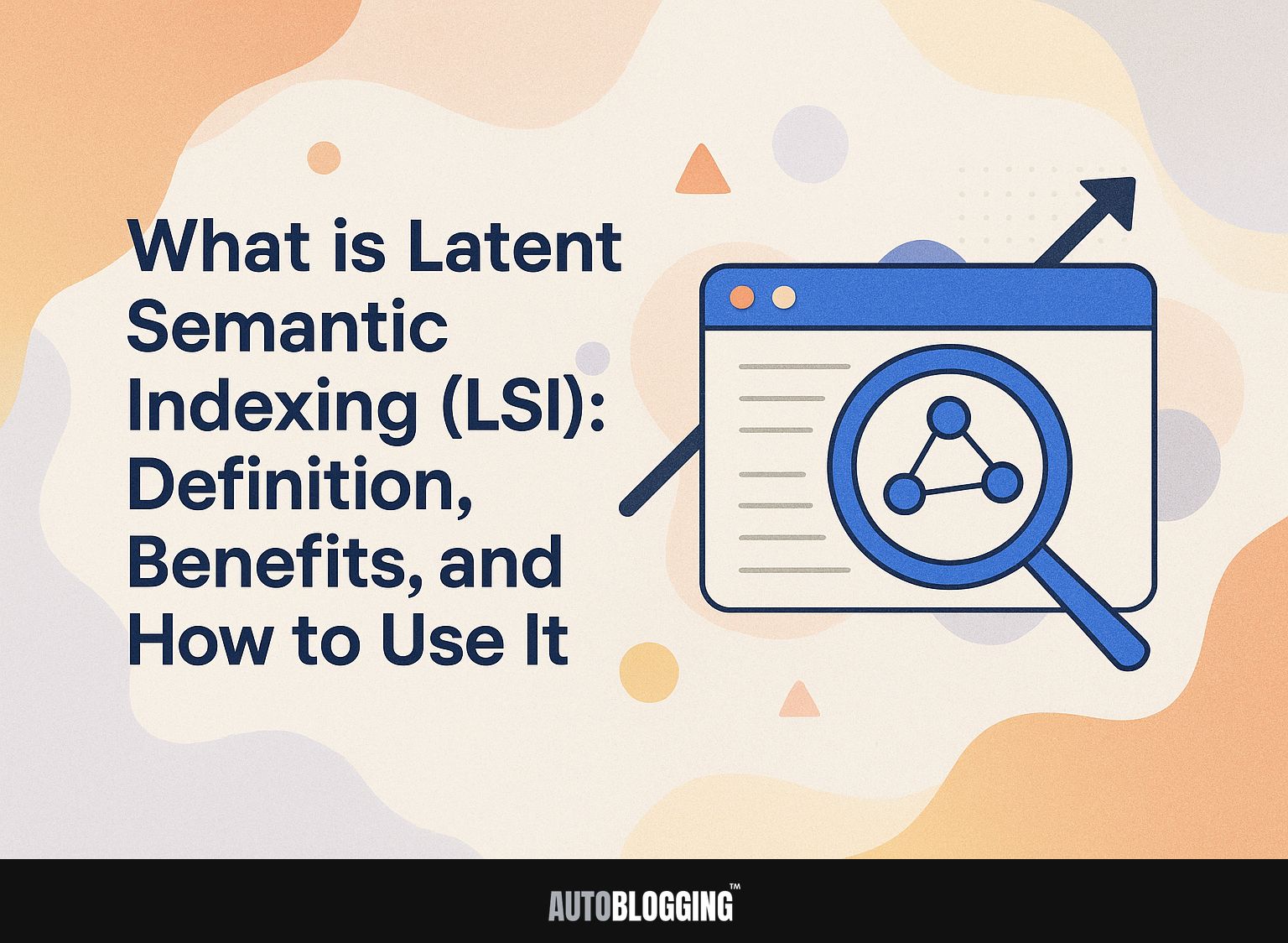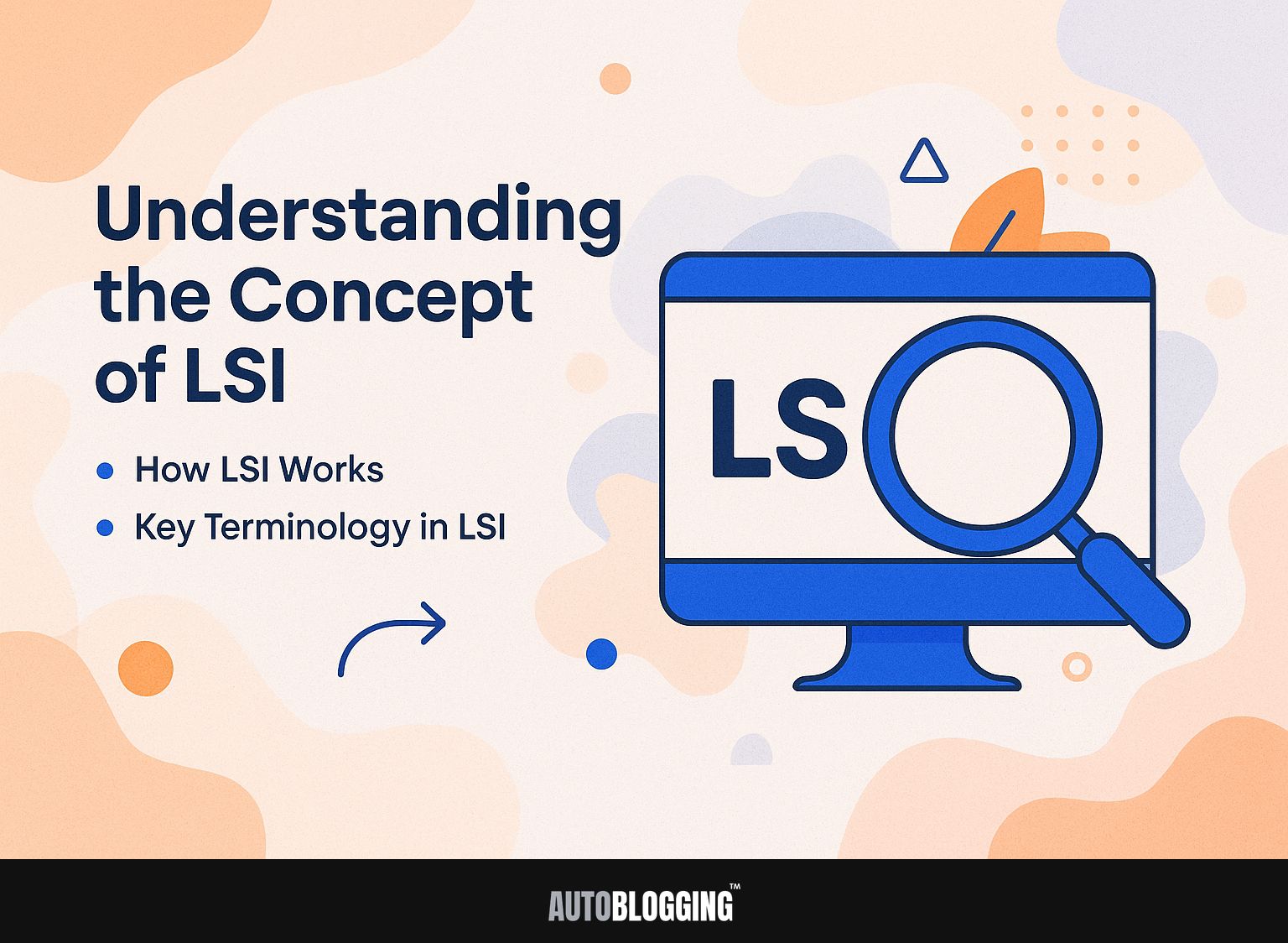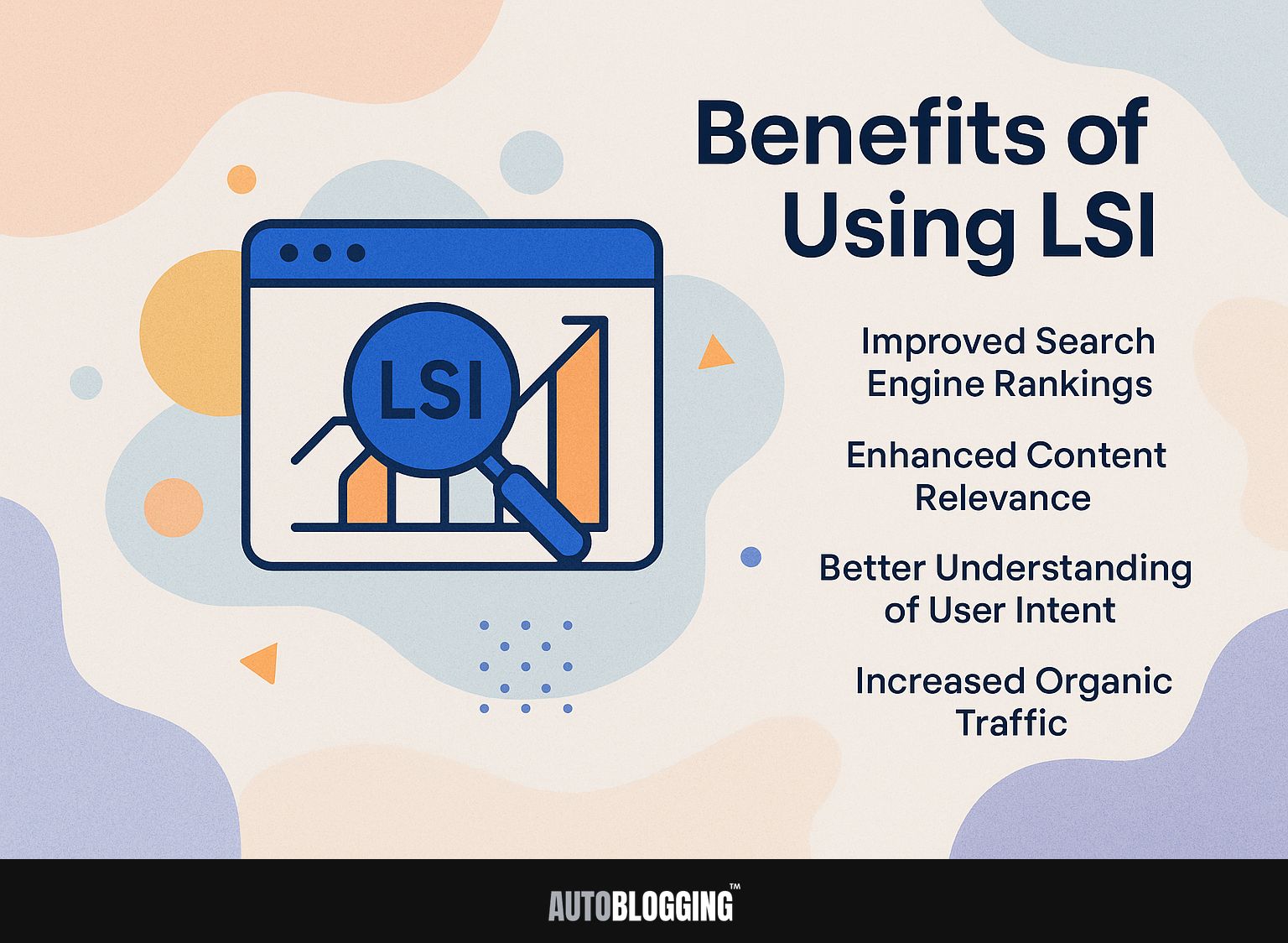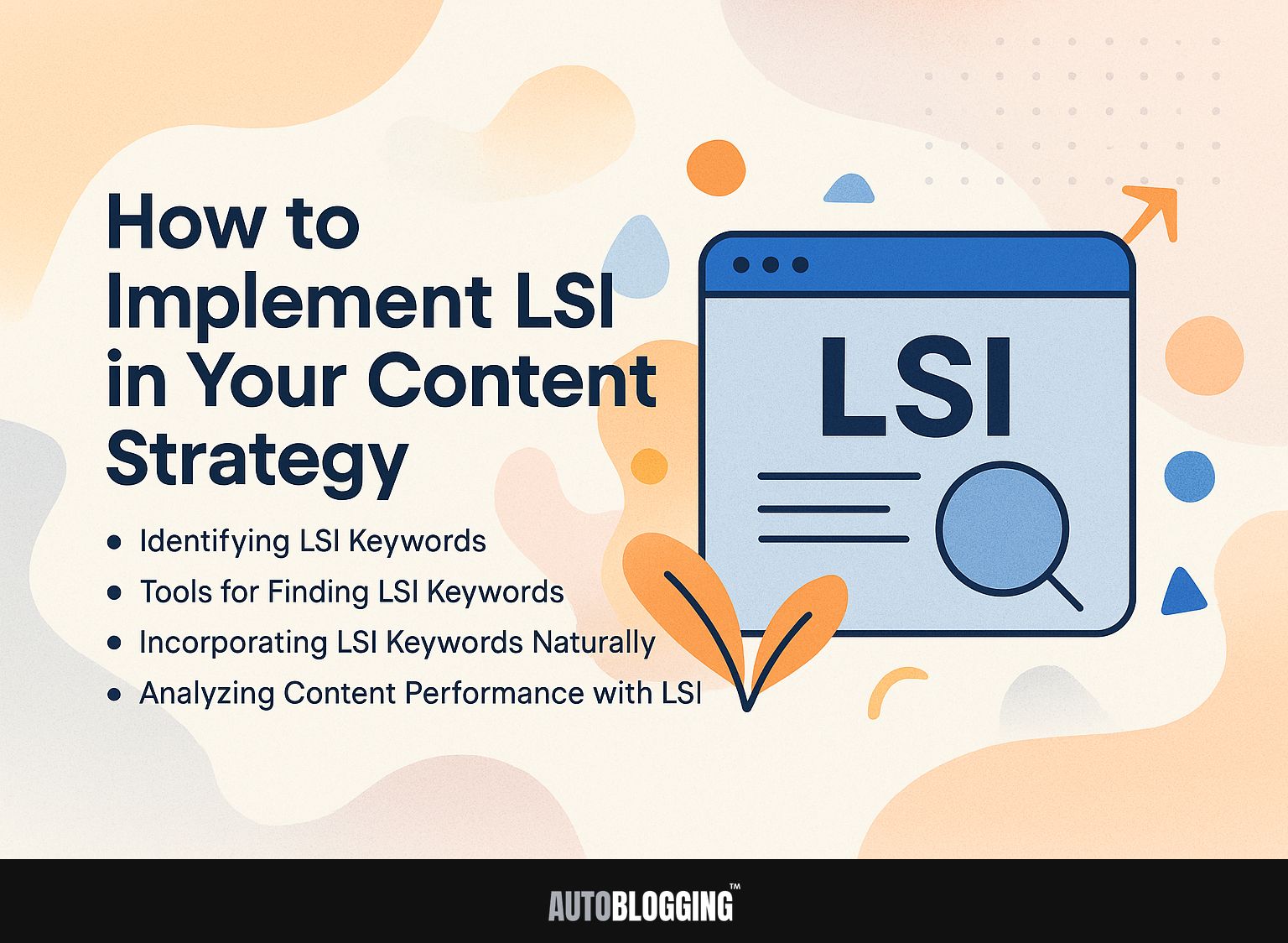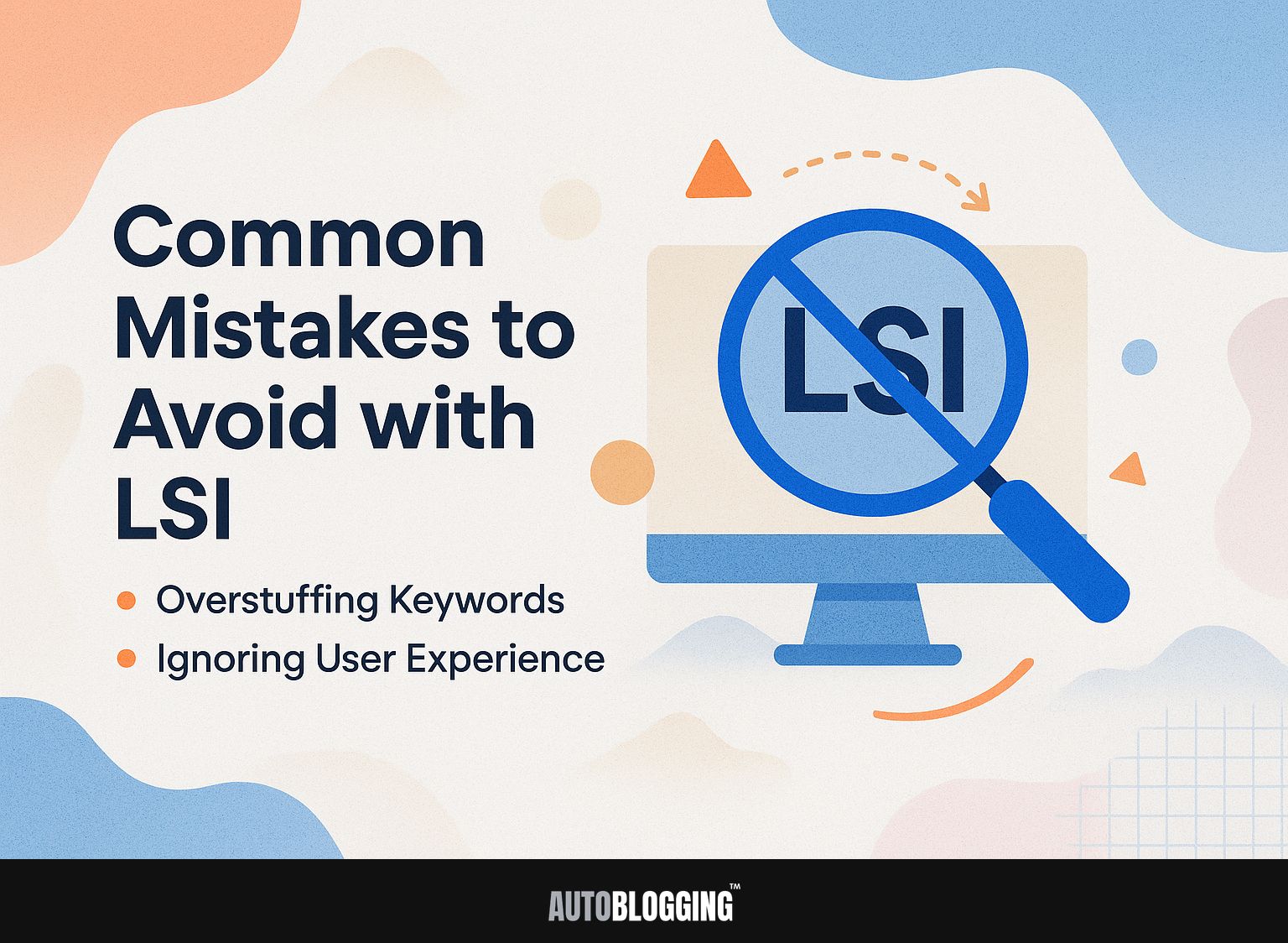Using latent semantic indexing (LSI) can improve your search engine marketing approach. As Google changes, knowing ideas like natural language processing and distributional semantics is important for search marketer. In this article, drawing knowledge from experts like Roger Montti, we’ll explain what LSI is, look at its advantages, and offer practical advice on how to use it effectively. Improve your content to increase its relevance and raise your rankings!
Key Takeaways:
- LSI is a technique used by search engines to analyze the relationship between words and concepts in order to improve search results.
- Using LSI in content can improve search engine rankings, make content more relevant, and better grasp what users want.
- To add LSI keywords to your content plan, find LSI keywords, use tools to locate them, and include them naturally without overusing. Watch out for usual errors and stay updated on upcoming changes in semantic search and AI.
Contents
- Understanding the Concept of LSI
- Benefits of Using LSI
- How to Implement LSI in Your Content Strategy
- Common Mistakes to Avoid with LSI
- Future of LSI and Semantic Search
- Frequently Asked Questions
- 1. What is Latent Semantic Indexing (LSI)?
- 2. What is the definition of Latent Semantic Indexing (LSI)?
- 3. What are the benefits of using Latent Semantic Indexing (LSI)?
- 4. How does Latent Semantic Indexing (LSI) work?
- 5. Is Latent Semantic Indexing (LSI) the same as keyword optimization?
- 6. How can I use Latent Semantic Indexing (LSI) to improve my website’s SEO?
1. What is LSI?
LSI is a mathematical method used by search engines to identify relationships between terms and concepts in documents, enhancing information retrieval accuracy. This approach helps improve search results by enabling algorithms to understand the meaning of questions.
For example, Google’s BERT uses LSI to analyze natural language, improving its ability to recognize what users want. To improve content using LSI, find related keywords and phrases with tools like Google Keyword Planner or SEMrush. Use these keywords naturally in your articles to increase relevance.
By concentrating on the actual meaning of words instead of just how often keywords appear, you can greatly improve how well your content appears in search results.
2. History and Development of LSI
Developed in the early 1990s by researchers at Bell Communications Research, LSI emerged as a solution to the limitations of traditional keyword-based search methods.
Over the years, Latent Semantic Indexing (LSI) has evolved significantly. In 1998, the seminal paper by Deerwester et al. introduced key mathematical models for dimensionality reduction, enhancing search accuracy.
Roger Montti helped make LSI applications well-known, highlighting their use in content marketing and SEO by finding related words that make webpages more relevant.
Machine learning advancements have improved LSI’s ability to analyze big data and grasp the meaning of content. This innovation has altered search algorithms and information retrieval processes. Related insight: What is Semantic SEO?
Understanding the Concept of LSI
Knowing how LSI works is important for using it effectively in content strategy, focusing on the key ideas of categorizing documents and the connections between terms.
1. How LSI Works
LSI applies singular value decomposition to term-document matrices to make it easier to identify hidden patterns in terms. This process begins with data collection from a diverse set of documents, where unique terms are identified and organized into a term-document matrix.
By applying singular value decomposition, you can highlight relationships between terms, revealing semantically similar words. For instance, if you’re analyzing documents about ‘car,’ LSI might connect it to ‘automobile,’ ‘vehicle,’ and ‘transport.’
Tools like Python’s Gensim library make this analysis easy, letting users perform LSI with simple commands. In the end, this method improves search engine function and makes content more relevant.
2. Key Terminology in LSI
Knowing the language of LSI is important; you should understand term frequency, how often terms appear together, and how to rank content by how important it is.
Term frequency is the number of times a keyword shows up in your content compared to the overall number of words. For instance, if your article is 1,000 words and the target keyword appears 15 times, the term frequency is 1.5%.
Using related terms like ‘SEO’, ‘keywords’, and ‘optimization’ together shows their importance and makes the content more relevant.
Relevance ranking measures how well your content addresses user queries, impacting its position on search engines. Tools like Moz or Ahrefs can help analyze these aspects effectively.
Benefits of Using LSI
Using LSI can greatly improve your content plan, helping with better search engine results and more organic website visitors.
1. Improved Search Engine Rankings
Websites can improve their search engine rankings by using LSI, which helps them better match what users are looking for and understand related concepts.
For example, a case study involving a travel blog showed a 40% increase in organic traffic after incorporating LSI keywords. The blog integrated terms like “eco-tourism” and “sustainable travel” alongside primary keywords such as “travel guides”.
Tools like SEMrush or Ahrefs can help identify relevant LSI keywords through their keyword analysis features. Checking the top-ranking pages for your main keywords can help you find related words that make the content clearer.
Using a clear method for placing keywords in titles, subtitles, and across the text helps improve both reader interest and search engine ranking.
2. Enhanced Content Relevance
LSI helps content match user searches more effectively by making sure articles cover both specific keywords and the overall topic and goal of the search.
By using Latent Semantic Indexing (LSI) ideas, you can write articles that connect better with your readers. For instance, if you’re writing about ‘digital marketing,’ include related terms like ‘SEO,’ ‘content strategy,’ and ‘social media.’
Tools such as Google Keyword Planner or LSIGraph can help you identify these terms. Websites like HubSpot and Moz focus on LSI by offering thorough guides that talk about both main subjects and related ones. This approach helps them improve their search engine rankings and gives readers detailed resources.
3. Better Understanding of User Intent
LSI provides marketers with information about what users want, helping them create content that connects with their audience and meets their expectations.
To use LSI well, begin by using tools like Google Trends to find popular search queries in your area. AnswerThePublic shows useful information by displaying common questions and phrases that people are asking.
Use these findings along with the right keywords to create your content. For instance, if you see more searches about ‘sustainable fashion,’ include phrases like ‘eco-friendly materials’ or ‘ethical brands’ in your articles.
This focused method makes sure your content matches what users want, improving interaction and reach.
4. Increased Organic Traffic
Utilizing LSI effectively can lead to a substantial increase in organic traffic; studies show a potential growth of up to 50% within months.
For example, a SaaS company implemented LSI by integrating keywords related to ‘cloud computing’ alongside primary terms. They used tools like SEMrush and Google Keyword Planner to find related LSI keywords.
Before the change, their blog averaged 5,000 monthly visitors. Three months later, this rose to 7,500, demonstrating a clear impact on their organic reach.
Using LSI enhances content quality and relevance, helping search engines understand the topic better, which boosts traffic.
How to Implement LSI in Your Content Strategy
Using LSI in your content plan means finding the right keywords and improving your content based on them. This is closely related to optimizing meta tags, which play a vital role in SEO performance-learn more about this in our article on meta tags: types, best practices, and SEO impact.
1. Identifying LSI Keywords
Finding LSI keywords means using tools like Google Keyword Planner and Ubersuggest to find related words that improve content.
To make the most of these tools, begin by typing your main keyword into Google Keyword Planner. Go to the ‘Find New Keywords’ section to see a list of similar terms. You can filter the results by relevance and search volume.
In Ubersuggest, input your keyword in the search bar, and access the ‘Related Keywords’ section. This will display a list of LSI keywords along with their search volume and SEO difficulty. Compile at least 10-15 keywords that fit your content context to strengthen your SEO strategy.
2. Tools for Finding LSI Keywords
Tools like LSI Graph and Thesaurus.com help find LSI keywords for your niche.
Along with LSI Graph and Thesaurus.com, consider using UberSuggest, which provides keyword suggestions alongside search volume and competition metrics.
Another useful tool is Keywords Everywhere, a browser extension that displays keyword details directly in your search results, helping you save time during research.
SEMrush provides a complete set of tools for analyzing keywords, letting you find specific long-tail keywords that match what users are looking for.
By using these tools in your content plan, you can improve SEO performance and focus on your audience with greater accuracy.
3. Incorporating LSI Keywords Naturally
Adding LSI keywords naturally into your content makes it easier to read and helps it rank better on search engines.
To effectively integrate LSI keywords, start by researching relevant terms using tools like Google’s Keyword Planner or SEMrush. Aim for a keyword density of 1-2%, ensuring natural usage within headers, subheaders, and body text.
For instance, if your primary keyword is ‘digital marketing,’ complementary LSI keywords could include:
- SEO
- social media
- content strategy
Use Yoast SEO to check how your keywords are spread out and make sure the text is easy to read. This method improves your SEO and increases user engagement by giving more details about your main topic.
4. Analyzing Content Performance with LSI
Tracking content performance post-LSI implementation can be achieved through analytics tools like Google Analytics and SEMrush, measuring key metrics.
Start by monitoring organic traffic, which indicates how well your content is ranking in search engines. Look at engagement numbers like average time spent on your site and the percentage of people who leave quickly to decide if your content is useful to visitors.
Use SEMrush to track keyword positions and see changes in how often your site appears in search results over time. To better understand your content’s performance, set up goals in Google Analytics to monitor conversions.
By checking these numbers often, you can find what works well and what needs change, which will help make your content better.
Common Mistakes to Avoid with LSI
Steering clear of common mistakes when using LSI is key to getting the most out of it and having a successful content plan.
1. Overstuffing Keywords
Using too many keywords can make it less enjoyable for users and can lead to search engines giving lower rankings, defeating the goal of LSI.
To keep a natural flow of keywords, use these strategies: Include keywords in your content in a way that they fit seamlessly into sentences.
Use related keywords or phrases that mean the same as your main topic. For example, instead of overusing “dogs,” integrate terms like “canines,” “puppies,” and “pets” thoughtfully throughout your text.
Tools like Google’s Keyword Planner can help identify related terms. By focusing on clear and smooth writing, you can improve search results and make the experience better for users.
2. Ignoring User Experience
Focusing on LSI without thinking about user experience can make people lose interest, which can hurt traffic and conversions.
To achieve a balance, focus on integrating Latent Semantic Indexing (LSI) keywords seamlessly into your content.
Begin by researching relevant LSI terms using tools like LSI Graph or Google Keyword Planner. Next, make sure your content is easy to read by keeping keyword use to about 1-2%.
After publishing, gather user feedback through surveys via platforms like SurveyMonkey or embedded feedback forms. Analyzing how individuals use tools like Hotjar can identify ways to make the site easier to use and more attractive.
Future of LSI and Semantic Search
Changes in AI and search algorithms are about to change how LSI and semantic search work, a shift that resonates with the strategies discussed in Harnessing AI in SEO: Innovative Strategies for Enhanced Digital Visibility and Search Optimization.
1. Trends in Search Algorithms
New developments in search algorithms show attempts to better understand meaning and context, improving search results. This evolution is primarily influenced by updates to the Search Quality Evaluator Guidelines, which emphasize the importance of Latent Semantic Indexing (LSI).
For example, using tools like SEMrush or Ahrefs can improve keyword research by identifying similar terms that make content more relevant.
Experts expect that upcoming changes to algorithms will focus more on reliable content and what users want, pushing marketers to develop more detailed topic groups.
To remain competitive, concentrate on creating high-quality content that answers particular user questions and naturally includes relevant keywords.
2. Impact of AI on LSI
AI technologies are changing LSI by using natural language processing (NLP) techniques to improve how content is interpreted and how users interact with it.
For example, tools like Meilisearch use current machine learning models to improve search accuracy. This engine uses AI to understand user requests and deliver results that closely fit their questions.
Complementing this, Google’s BERT model analyzes the context of words in search queries to deliver better outcomes. By using these technologies, websites can change their content strategies to naturally emphasize important terms, which greatly increases user interaction and search rankings.
3. Recap of Key Points
Key points from the discussion highlight the importance of LSI in improving search relevancy, enhancing user experience, and driving organic traffic.
Latent Semantic Indexing (LSI) is important for improving the visibility of your content on search engines.
To implement LSI effectively, start by researching keywords related to your main topic using tools like Google Keyword Planner or SEMrush.
Use these related terms naturally in your content to improve context. For example, if your primary keyword is ‘digital marketing,’ use LSI keywords such as:
- ‘SEO’
- ‘content strategy’
- ‘social media advertising.’
Regularly update your content to reflect changing trends, which can keep your audience engaged and improve rankings.
4. Final Thoughts on LSI
As search engines evolve, LSI remains a cornerstone of effective content marketing, guiding the development of SEO strategies that prioritize user intent.
- To use LSI well, start by finding related keywords with tools like Google Keyword Planner or Ahrefs.
- Create content that addresses potential user questions by including synonyms and variations of your main keywords-this improves semantic relevance.
- For example, if your main keyword is “healthy recipes,” consider including terms like “nutritious meals” and “wholesome dishes.”
- Regularly monitor your site’s analytics to adjust your keywords according to performance, ensuring your content aligns with changing search trends and user expectations.
- Staying current will keep your strategy effective.
Frequently Asked Questions
1. What is Latent Semantic Indexing (LSI)?
Latent Semantic Indexing, or LSI, is a mathematical technique used to analyze and identify the relationships between words in a body of text. It helps search engines grasp the details and significance of a specific document or webpage, making it simpler to offer suitable results for a user’s search query.
2. What is the definition of Latent Semantic Indexing (LSI)?
Latent Semantic Indexing is a way to study and make sense of text by finding connections between words and ideas. LSI is used by search engines to improve the accuracy and relevance of search results.
3. What are the benefits of using Latent Semantic Indexing (LSI)?
LSI helps search engines understand what a webpage or document is about, leading to search results that more accurately reflect what users want. It also helps users grasp a topic more completely, resulting in a better user experience and more interaction.
4. How does Latent Semantic Indexing (LSI) work?
LSI uses a mathematical algorithm to identify relationships between words in a body of text. It creates a map of related terms and concepts, and then uses this map to understand the context and meaning of a particular document. This allows search engines to provide more relevant results to a user’s search query.
5. Is Latent Semantic Indexing (LSI) the same as keyword optimization?
No, LSI is not the same as keyword optimization. While keyword optimization involves using certain words and phrases to improve search engine results, LSI focuses on grasping the context and sense of a document. It can help improve search engine rankings, but it is not the same as traditional keyword optimization techniques.
6. How can I use Latent Semantic Indexing (LSI) to improve my website’s SEO?
To use LSI to improve your website’s SEO, you can start by creating high-quality, relevant content that includes variations of your main keywords. This can help search engines understand the different terms and concepts related to your topic. You can also use tools and methods that examine and recommend related keywords and phrases to include in your content. This can help improve the relevance and accuracy of your website’s content, leading to better search engine rankings.

